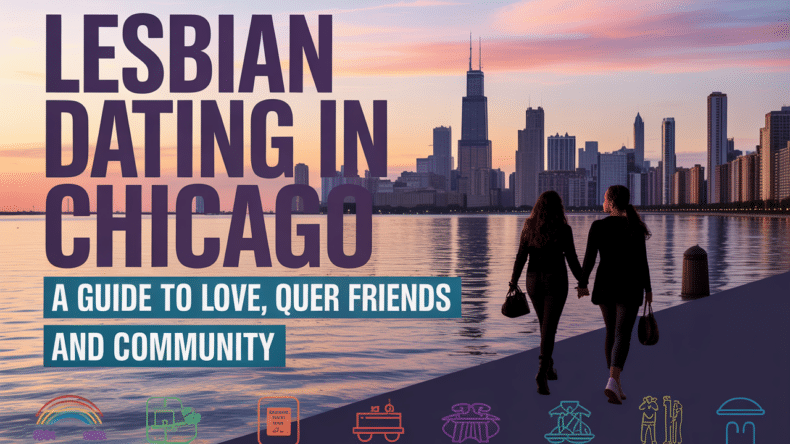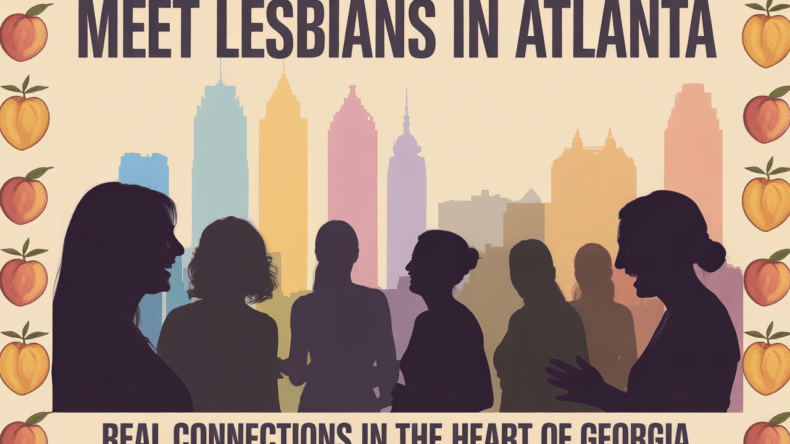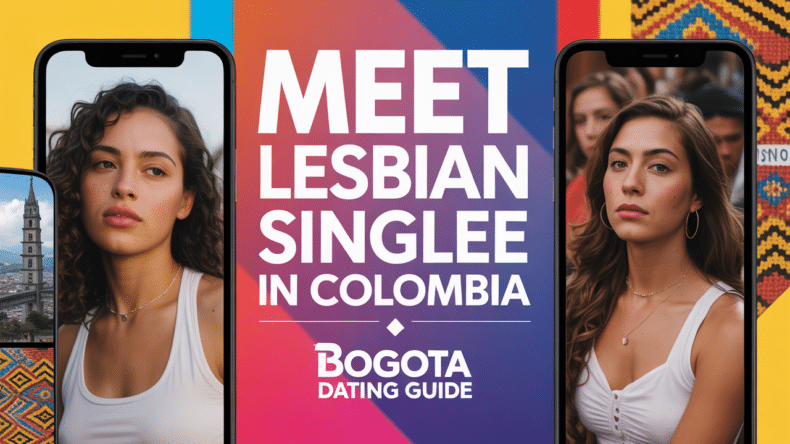Introduction
Finding accurate data on lesbian populations worldwide reveals fascinating insights into global LGBTQI+ demographics. This article explores the complex question: which country has the most lesbian women?
Understanding where lesbian populations are located in different countries serves several important purposes:
- Helps shape inclusive policies and laws
- Guides resource allocation for LGBTQI+ support services
- Strengthens advocacy efforts for equal rights
- Identifies areas needing increased visibility and representation
Current research suggests significant differences in reported lesbian populations between countries, influenced by factors such as:
- Cultural acceptance
- Legal protections
- Data collection methods
- Social stigma
- Religious beliefs
In this comprehensive exploration, you’ll discover key statistics on lesbian populations across different nations, from Australia’s reported 19% same-sex attraction rate among women to Israel’s notable 15.2% identification rate. You’ll learn how various countries approach LGBTQI+ rights and acceptance, affecting how women feel comfortable identifying as lesbian.
The data presents unique challenges – many countries lack comprehensive statistics, some populations remain undercounted due to discrimination, others show varying results based on different survey methodologies. This analysis brings together available research to paint a clearer picture of global lesbian demographics.
Understanding Global LGBTQI+ Demographics
Recent studies show that about 8% of people worldwide identify as part of the LGBTQI+ community. This percentage varies greatly in different parts of the world and among different cultures, with some countries reporting higher numbers than others.
Challenges in Understanding Lesbian Women within the LGBTQI+ Population
The distribution of lesbian women within the LGBTQI+ population presents unique challenges for researchers and statisticians:
1. Data Collection Barriers
- Many countries lack systematic methods for gathering sexual orientation data
- Self-reporting rates remain low in regions with strong social stigma
- Some nations explicitly prohibit questions about sexual orientation in census surveys
2. Regional Variations
- Western nations typically report higher percentages of lesbian identification
- Urban areas show consistently higher rates compared to rural regions
- Cultural acceptance levels directly influence self-reporting rates
Current Global Statistics:
North America: 5-7% identify as LGBTQI+
Europe: 6-8% identify as LGBTQI+
Asia: 3-5% identify as LGBTQI+ (with significant underreporting)
Africa: Limited data available due to legal restrictions
The percentage of women identifying as lesbian within these populations ranges from 1% to 4%, depending on the region and study methodology. These numbers likely represent significant underestimates due to:
- Reporting Challenges
- Fear of discrimination
- Legal consequences in certain countries
- Limited access to survey participation
- Cultural and religious pressures
Research indicates a generational shift in identification rates. Gen Z and Millennial women report higher rates of lesbian identification compared to older generations:
- Gen Z: 15-20% identify as LGBTQI+
- Millennials: 10-15% identify as LGBTQI+
- Gen X and older: 2-5% identify as LGBTQI+
These statistics highlight the complex relationship between social acceptance, legal protections, and self-identification rates across different regions and age groups.
Key Statistics on Lesbian Women Worldwide
Recent global surveys reveal diverse patterns in lesbian identification across different countries. The data presents both self-reported figures and research-based estimates that paint a complex picture of lesbian demographics worldwide.
Self-Reported Statistics by Region:
North America:
- United States: 1.8% of women identify as lesbian
- Canada: 1.7% of women identify specifically as lesbian
Europe:
- United Kingdom: 2.1% of women identify as lesbian
- Netherlands: 1.4% of women identify as lesbian
- Germany: 1.3% of women identify as lesbian
Asia Pacific:
- Australia: 3.2% of women identify as lesbian
- New Zealand: 2.6% of women identify as lesbian
- Japan: 0.9% of women identify as lesbian
Research indicates these numbers likely underrepresent actual lesbian populations. Several factors affect data accuracy:
Statistical Challenges
- Different survey methodologies across countries
- Varying definitions of sexual orientation
- Cultural stigma affecting self-reporting
- Limited data collection in many regions
- Age-related reporting differences
The interpretation of these statistics requires careful consideration. Countries with higher reported numbers often correlate with:
- Progressive LGBTQI+ rights
- Legal protections for same-sex relationships
- Social acceptance of diverse sexual orientations
- Robust data collection methods
- Freedom of expression
Recent studies suggest younger generations show higher rates of lesbian identification. Gen Z women report lesbian identification at rates 2-3 times higher than previous generations across multiple countries.
These statistics highlight significant variations between official reports and estimated actual numbers. Research organizations estimate the true percentage of lesbian women ranges from 3-8% of the female population globally, depending on how sexual orientation is defined and measured.
Exploring Countries with Notable Lesbian Populations
Several countries stand out for their significant lesbian populations, with data revealing interesting patterns in same-sex attraction and identification across different regions. These statistics paint a picture of where lesbian communities are most visible and supported.
Australia: A Leader in LGBTQI+ Acceptance
Australia emerges as a frontrunner in lesbian representation, with research indicating 19% of Australian women have experienced same-sex attraction during their lives. This high percentage reflects both:
- Greater social acceptance of diverse sexual orientations
- Strong legal protections for LGBTQI+ individuals
- Active visibility in metropolitan areas like Sydney and Melbourne
The Australian lesbian community benefits from comprehensive anti-discrimination laws and marriage equality legislation passed in 2017. These legal frameworks have created an environment where women feel safer expressing their sexual orientation openly.
Key factors contributing to Australia’s high lesbian population include:
- Progressive Healthcare Systems
- Inclusive mental health services
- Specialized LGBTQI+ health programs
- Support for same-sex couples seeking fertility treatments
- Cultural Integration
- Prominent lesbian representation in media
- Regular LGBTQI+ festivals and events
- Strong presence in political and social movements
- Educational Support
- LGBTQI+-inclusive curriculum in schools
- Anti-bullying programs
- University support groups and resources
The country’s major cities host thriving lesbian communities, with Sydney’s Inner West and Melbourne’s Northcote areas known as popular neighborhoods for lesbian residents. These urban centers provide:
- Dedicated lesbian bars and social spaces
- Community centers offering support services
- Regular social events and meetups
- Professional networking opportunities
Recent surveys indicate a steady increase in the number of women openly identifying as lesbian in Australia, particularly among younger generations. This trend aligns with the country’s evolving attitudes toward sexual diversity and its strengthening legal protections for LGBTQI+ rights.
The Australian lesbian population’s visibility extends into various professional sectors, with notable representation in:
- Politics and public service
- Arts and entertainment
- Education and academia
- Healthcare and social services
These factors combine to make Australia a significant hub for lesbian communities, creating an environment where women feel increasingly comfortable expressing their sexual orientation and building meaningful relationships.
2. United States
The United States presents an interesting contrast between public perception and statistical reality regarding its lesbian population. While many consider the U.S. to have one of the largest LGBTQI+ communities globally, recent data reveals a different picture.
According to Gallup’s 2021 survey, 5.6% of American adults identify as LGBTQI+. Within this group, approximately 11% specifically identify as lesbian women – a significantly smaller percentage than commonly assumed. This translates to roughly 0.6% of the total U.S. adult population identifying as lesbian.
Regional Variations
Regional variations paint a diverse landscape across the country:
- Urban Centers: Cities like San Francisco, Seattle, and Portland report higher concentrations of lesbian residents
- Coastal States: New York and California show above-average lesbian population densities
- Rural Areas: Lower reported numbers, potentially influenced by social stigma and reduced visibility
Perception vs. Statistics
The discrepancy between perception and statistics might stem from:
- High media visibility of LGBTQI+ communities in American entertainment
- Strong advocacy movements and pride celebrations
- Concentrated LGBTQI+ populations in specific urban areas creating visible communities
Future Trends
Young Americans demonstrate increasing openness to sexual identity exploration. Gen Z women (ages 18-23) report significantly higher rates of lesbian identification compared to older generations, suggesting potential growth in these numbers over time.
3. Canada
Canada’s journey toward LGBTQI+ acceptance reveals a remarkable transformation. In 1988, only 1% of women openly identified as gay – a stark contrast to 2016’s statistics showing 8% of Canadian women identifying as lesbian or bisexual.
The country’s progressive stance on LGBTQI+ rights has created a supportive environment for lesbian women. Canada became the fourth country worldwide to legalize same-sex marriage in 2005, setting a precedent for other nations.
Key milestones in Canada’s LGBTQI+ evolution:
- 1969: Decriminalization of homosexuality
- 1992: Lifting of ban on LGBTQI+ military service
- 1996: Sexual orientation added to Human Rights Act
- 2005: Nationwide same-sex marriage legalization
Canadian cities like Toronto and Vancouver have established vibrant lesbian communities. These urban centers host annual Pride celebrations attracting hundreds of thousands of participants. The Toronto Lesbian and Gay Archives, North America’s largest independent LGBTQI+ archive, preserves the rich history of Canada’s queer community.
Recent studies indicate higher rates of lesbian identification among younger Canadian women, particularly in urban areas. Statistics Canada reports that women aged 18-34 are three times more likely to identify as lesbian compared to women over 55, reflecting growing acceptance and visibility in Canadian society.
This evolving landscape is part of a larger timeline of Canadian LGBTQI+ history, marked by significant milestones and achievements that continue to shape the experience and rights of the queer community in Canada.
4. Israel
Israel stands out with a remarkable 15.2% of women identifying as gay – one of the highest reported rates globally. This significant percentage reflects the country’s progressive stance on LGBTQI+ rights within the Middle East region.
Tel Aviv emerges as a beacon for lesbian visibility and acceptance, earning its reputation as the “Gay Capital of the Middle East.” The city hosts:
- Annual Pride celebrations drawing hundreds of thousands
- Numerous LGBTQI+-owned businesses and social spaces
- Active lesbian social networks and community organizations
The legal landscape in Israel supports lesbian rights through:
- Recognition of same-sex marriages performed abroad
- Equal adoption rights for same-sex couples
- Anti-discrimination protections in employment
Despite these advances, acceptance varies significantly across different segments of Israeli society. Religious communities often maintain conservative views, creating challenges for lesbian women from Orthodox backgrounds. Studies indicate:
- 78% of secular Jews support LGBTQI+ rights
- 23% of ultra-Orthodox Jews express acceptance
- Mixed attitudes among Arab-Israeli communities
Urban-rural divides also impact lesbian visibility and acceptance. While Tel Aviv boasts thriving lesbian communities, smaller towns and religious settlements present more challenging environments. This geographic disparity influences how openly lesbian women live and express their identities across different regions of the country.
However, it’s important to note that despite the progressive laws and high visibility in some urban areas, the overall human rights situation in Israel, particularly regarding LGBTQI+ individuals, remains complex and multifaceted, with various challenges still to be addressed.
Other Noteworthy Countries Recognized for Their Openness Towards Lesbians
Portugal and Sweden stand out as beacons of LGBTQI+ acceptance in Europe, with both nations fostering inclusive environments through progressive legislation and cultural shifts. These countries demonstrate that population size doesn’t determine the level of acceptance for lesbian women.
Portugal’s Progressive Stance
- Legalized same-sex marriage in 2010
- Banned discrimination based on sexual orientation in employment (2003)
- Allows same-sex adoption and assisted reproduction
- Ranked among top 10 countries in ILGA-Europe’s Rainbow Index
- Strong anti-discrimination laws protecting LGBTQI+ individuals
The Portuguese society has undergone significant transformation in recent decades, moving from a conservative Catholic nation to one of Europe’s most LGBTQI-friendly countries. Local Pride events draw thousands of participants annually, with lesbian visibility increasing through media representation and public discourse.
Sweden’s Pioneering LGBTQI+ Rights
- First country to allow gender reassignment after legal review (1972)
- Decriminalized homosexuality in 1944
- Same-sex couples granted adoption rights in 2003
- Marriage equality achieved in 2009
- Comprehensive anti-discrimination protections
Sweden’s long-standing commitment to equality has created a society where lesbian women enjoy broad social acceptance. The country’s educational system actively promotes LGBTQI+ awareness, contributing to positive attitudes among younger generations.
Recent surveys indicate high public support for LGBTQI+ rights in both nations:
- 74% of Portuguese citizens support same-sex relationships
- 92% of Swedes believe LGBTQI+ individuals should have equal rights
These statistics reflect successful integration of LGBTQI+ rights into national identity, though both countries continue working toward greater inclusion. Local organizations actively promote lesbian visibility through cultural events, support networks, and advocacy campaigns, creating spaces where women feel safe expressing their identity.
In addition to Portugal and Sweden, other European nations also exhibit a commendable level of acceptance towards the LGBTQI+ community. According to a report by Movilh, several OECD countries have made significant strides in recognizing and protecting the rights of LGBTQI+ individuals.
Factors Influencing Lesbian Identification Across Countries
Multiple societal elements shape how women identify and express their sexual orientation across different nations. These complex factors create varying levels of acceptance and visibility for lesbian women worldwide:
1. Religious Influence
- Conservative religious beliefs often discourage open identification
- Religious persecution in certain regions forces many to remain closeted
- Progressive religious interpretations in some countries support LGBTQ+ acceptance
2. Colonial Legacy
- Anti-gay laws inherited from colonial periods persist in many nations
- Post-colonial societies often struggle with traditional vs. modern values
- Countries that have addressed colonial-era discrimination show higher rates of lesbian identification
3. Media Representation
- Positive lesbian representation in media correlates with increased self-identification
- Countries with diverse media portrayals report higher numbers of openly lesbian women
- Limited or negative representation reinforces societal stigma
4. Educational Systems
- LGBTQ-inclusive education programs reduce discrimination
- Schools teaching about sexual orientation diversity report decreased bullying
- Countries implementing comprehensive sex education show higher rates of acceptance
5. Legal Framework
- Anti-discrimination laws protect lesbian women’s rights
- Employment protection encourages open identification
- Marriage equality laws signal societal acceptance
6. Urban vs. Rural Dynamics
- Urban areas typically provide more supportive environments
- Rural communities often maintain traditional views
- Metropolitan regions report higher percentages of lesbian identification
These factors interact differently across nations, creating unique environments that either encourage or discourage lesbian women from openly identifying. Countries implementing supportive policies and educational programs consistently report higher numbers of self-identified lesbian women.
Conclusion
The global landscape of lesbian visibility reveals significant variations across countries, with Australia, Israel, and Canada emerging as nations with notable lesbian populations. These statistics reflect both genuine demographic differences and varying levels of societal acceptance that enable women to openly identify as lesbian.
Progress in LGBTQI+ rights has created safer spaces for lesbian women to live authentically in many countries. Yet substantial challenges persist:
- Discriminatory laws in numerous regions
- Social stigma and cultural barriers
- Limited access to healthcare and support services
- Underrepresentation in media and politics
You can make a difference in supporting lesbian visibility and rights:
- Support local LGBTQI+ organizations through donations or volunteer work
- Amplify lesbian voices in your community
- Challenge discriminatory practices when you encounter them
- Share accurate information about lesbian experiences and demographics
The path toward global equality for lesbian women continues to evolve. Your active participation in creating inclusive spaces helps build a world where every woman feels free to express her authentic identity, regardless of geographic location.





